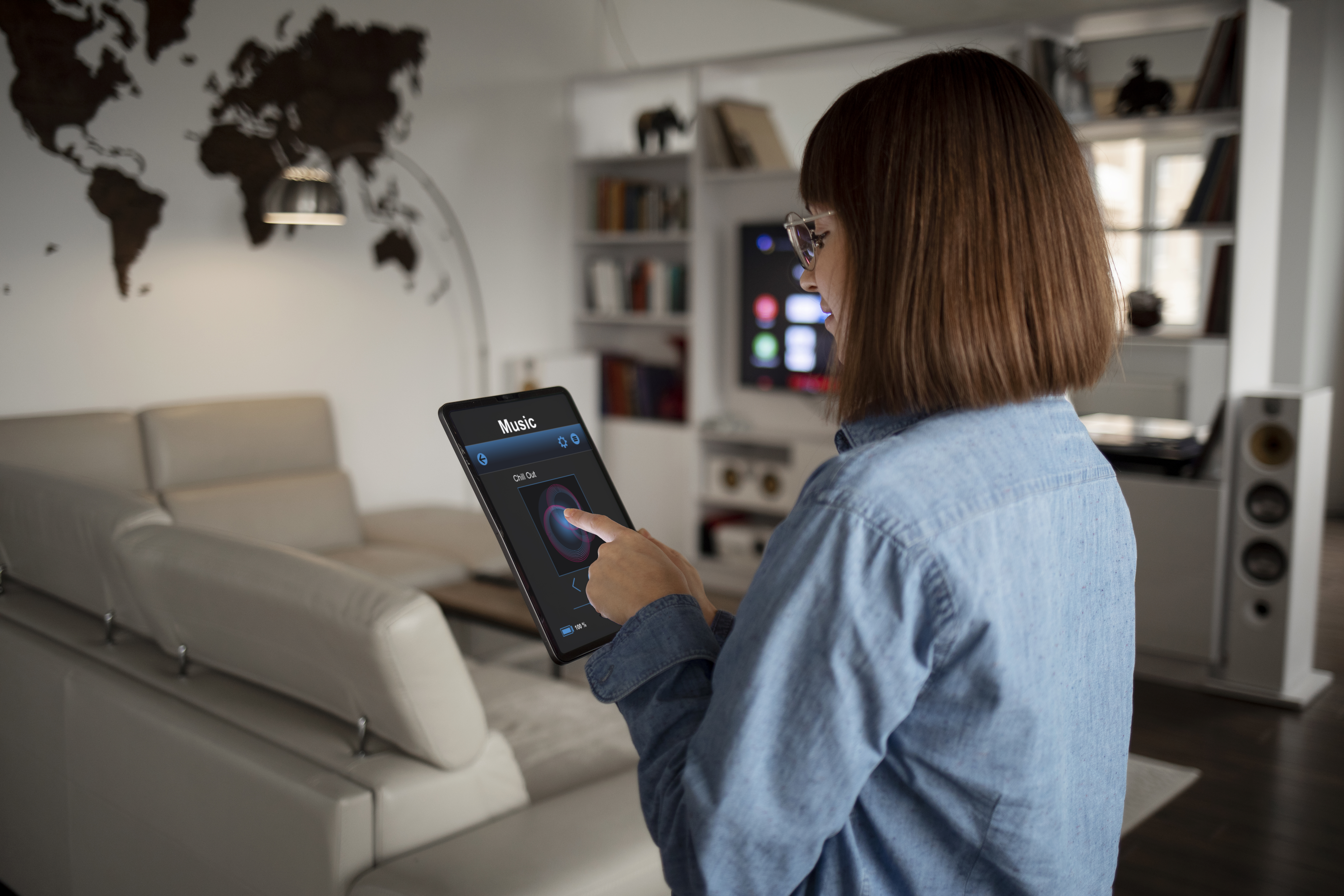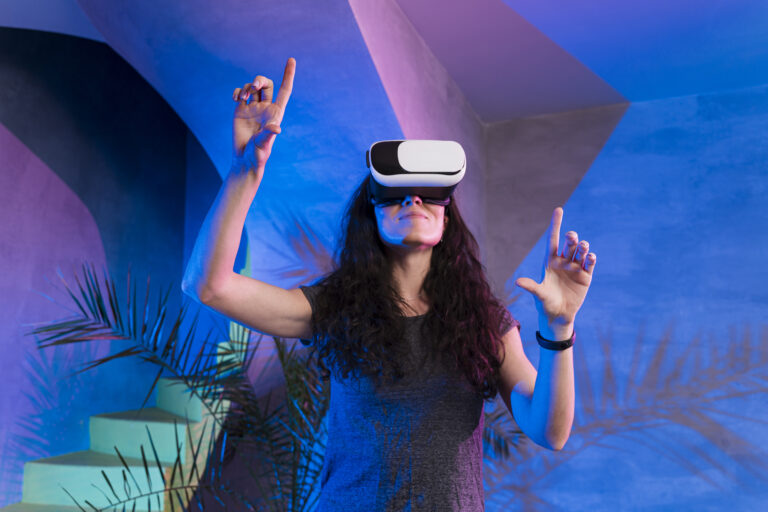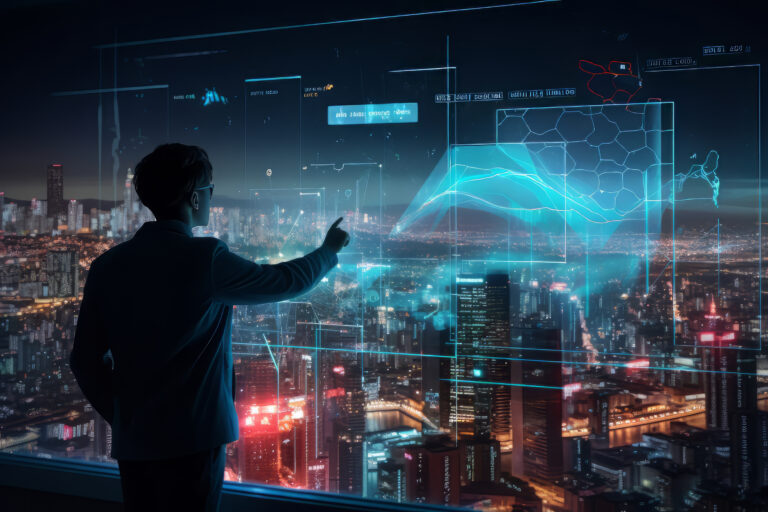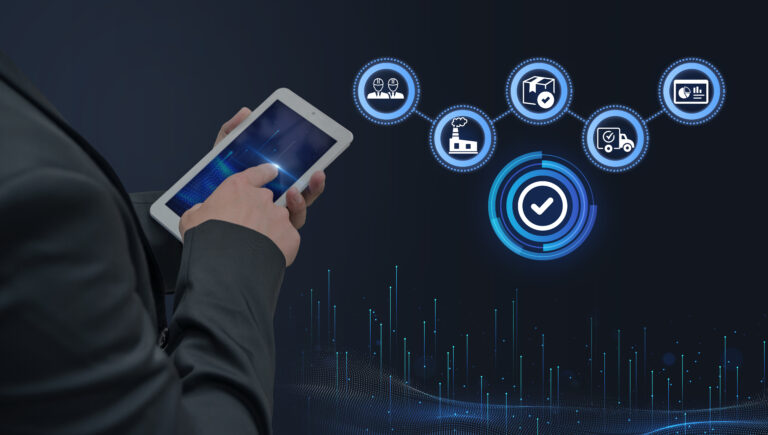The Future of Tech in Home Automation
Home automation, once a futuristic concept, is now becoming an integral part of modern living, transforming houses into smart homes equipped with advanced technologies that enhance convenience, security, and energy efficiency. Let’s explore how technology is shaping the future of home automation and revolutionizing the way we live.
Smart Devices: Enhancing Everyday Convenience
Smart devices and connected appliances automate routine tasks, simplify household management, and improve overall convenience for homeowners.
Voice-Activated Assistants
Voice-activated assistants, like Amazon Alexa and Google Assistant, enable hands-free control over smart home devices, entertainment systems, and daily tasks. These AI-powered assistants respond to voice commands, schedule reminders, and provide real-time information, enhancing user interaction and accessibility within smart home environments.
Smart Lighting and Climate Control
Smart lighting systems, such as Philips Hue and Lutron Caseta, adjust brightness levels, color temperatures, and ambiance based on user preferences and natural lighting conditions. Programmable thermostats, like Nest and Ecobee, optimize indoor temperatures, conserve energy, and reduce utility costs through remote monitoring and automated scheduling features.
Home Security: Ensuring Peace of Mind
Technology-driven security solutions enhance home protection, monitor property activities, and deter potential threats in residential environments.
Smart Cameras and Surveillance Systems
Smart cameras, like Ring and Arlo, offer real-time video monitoring, motion detection, and remote access capabilities via mobile apps. These surveillance systems provide homeowners with peace of mind, deter intruders, and facilitate visual verification of security alerts through cloud-based storage and live streaming functionalities.
Smart Locks and Access Control
Smart locks, such as August and Yale, secure entry points, manage access permissions, and monitor door activities using digital keys and biometric authentication features. These keyless entry systems integrate with home automation platforms, enable remote lock/unlock functionalities, and enhance residential safety through personalized access controls and activity logs.
Energy Efficiency: Promoting Sustainability
Smart home technologies promote energy conservation, optimize resource usage, and reduce environmental impact through intelligent monitoring and automation solutions.
Energy Monitoring and Smart Grid Integration
Energy monitoring devices, like Sense and Smappee, track electricity consumption, identify energy-intensive appliances, and provide actionable insights to optimize usage patterns and reduce utility bills. Smart grid technologies enable bidirectional energy flow, demand response programs, and renewable energy integration, enhancing grid reliability and promoting sustainable energy practices in smart homes.
Solar Power and Home Automation Integration
Solar power systems, coupled with home automation technologies, maximize energy generation, store surplus electricity, and prioritize self-consumption through smart inverters and energy management platforms. These integrated solutions reduce dependency on traditional grid sources, lower carbon footprints, and support eco-friendly lifestyles by harnessing solar energy to power smart home devices and appliances.
Health and Wellness: Enhancing Quality of Life
Technology-enabled health and wellness solutions promote personalized care, monitor lifestyle behaviors, and improve overall well-being within residential settings.
Smart Health Devices and Remote Monitoring
Smart health devices, like Fitbit and Withings, track fitness metrics, monitor vital signs, and synchronize health data with mobile apps for personalized insights and goal tracking. Remote monitoring platforms enable caregivers to remotely supervise patients, manage medication schedules, and receive real-time health alerts, promoting independence and ensuring continuity of care in smart home environments.
Ambient Assisted Living (AAL) Technologies
Ambient Assisted Living (AAL) technologies support aging in place, assist individuals with disabilities, and enhance daily living activities through adaptive devices and assistive technologies. Smart sensors, wearable devices, and voice-controlled assistants facilitate hands-free interactions, monitor health conditions, and provide assistive services to promote autonomy and improve quality of life for residents.
Connectivity and Interoperability: Seamless Integration
Interoperable smart home ecosystems enable seamless integration, cross-device compatibility, and unified control over connected devices through interoperable protocols and IoT platforms.
Home Automation Hubs and Integration Platforms
Home automation hubs, such as Samsung SmartThings and Apple HomeKit, centralize device management, automate workflows, and support interoperability across diverse smart home product categories. Integration platforms enable cross-platform communication, synchronize device interactions, and enhance user experiences through intuitive interfaces and personalized automation routines tailored to individual preferences.
IoT Connectivity and Smart Home Standards
IoT connectivity standards, like Zigbee and Z-Wave, facilitate device interoperability, ensure data security, and optimize wireless communication within smart home networks. These protocols promote vendor-neutral solutions, interoperable ecosystems, and scalable deployments across residential environments, fostering innovation and expanding smart home capabilities in an interconnected digital landscape.
Future Innovations and Emerging Trends
As technology continues to advance, emerging trends such as artificial intelligence (AI), augmented reality (AR), and 5G connectivity will drive the future evolution of home automation, transforming residential living experiences and shaping smart home environments.
AI-Powered Smart Assistants and Predictive Automation
AI-powered smart assistants, equipped with machine learning algorithms, anticipate user behaviors, automate predictive actions, and personalize experiences based on evolving preferences and environmental conditions. These intelligent systems optimize energy efficiency, enhance security protocols, and streamline daily routines through proactive automation and adaptive learning capabilities within smart home ecosystems.
Augmented Reality (AR) and Immersive Home Experiences
AR technologies enable immersive home experiences, virtual interior design simulations, and augmented reality overlays for interactive home improvement projects. These visualizations empower homeowners to visualize furniture placements, experiment with decor styles, and customize living spaces through virtual design tools and augmented reality applications.
Conclusion
Technology is driving the future of home automation by enhancing convenience, security, energy efficiency, health and wellness, connectivity, and interoperability within residential environments. From smart devices and AI-driven assistants to sustainable energy solutions and connected health innovations, technology-enabled advancements are reshaping how homeowners interact with their living spaces and manage daily routines in an increasingly digital world.
By embracing technological innovations and adopting smart home solutions, homeowners can optimize lifestyle preferences, improve household management, and create personalized living experiences that prioritize comfort, efficiency, and sustainability. As technology continues to evolve, the future of home automation holds promise for transformative innovations that redefine residential living, enhance quality of life, and shape the future of smart homes worldwide.






